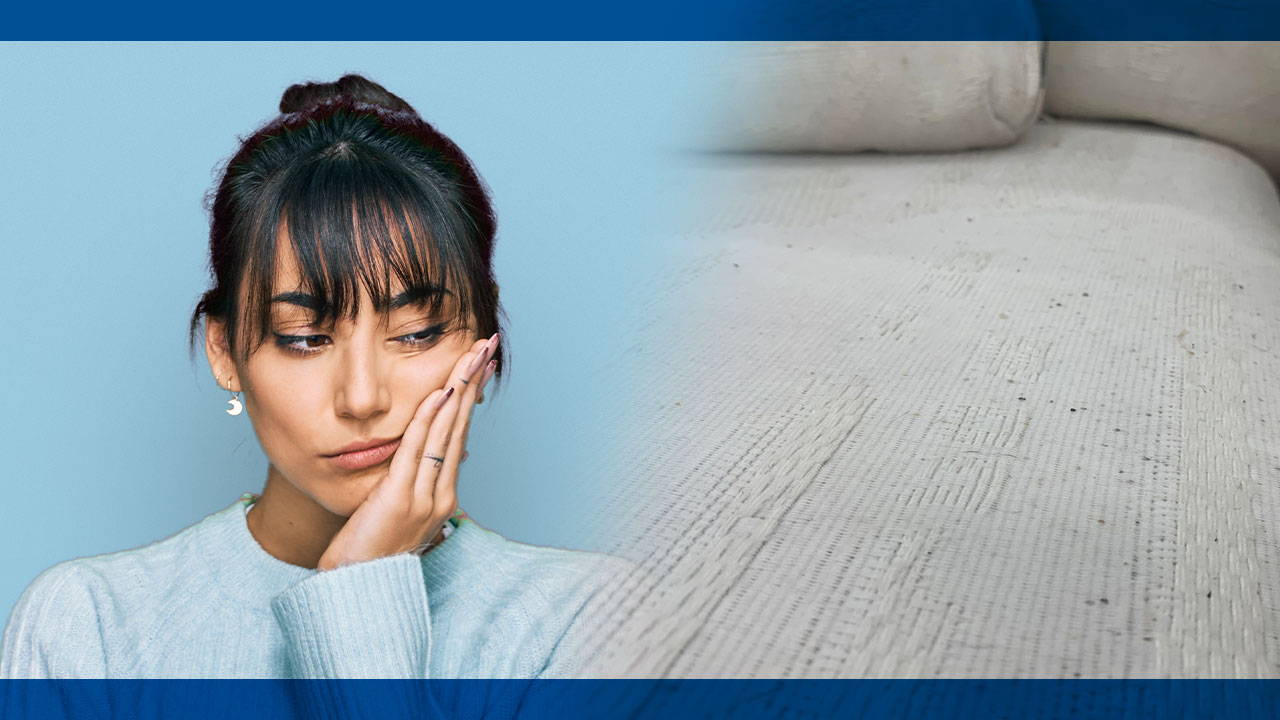Your Cart is Empty
Menu



November 09, 2023 3 min read
When you invest in quality furniture, you want it to look and feel great for years. However, over time, even the finest upholstered pieces can develop an unwanted and unsightly issue called pilling.
Pilling is the formation of tiny, fuzzy balls on the surface of fabrics, which can diminish the appearance and comfort of your furniture. In this article, we'll explore what pilling is, how it happens to your upholstery, and provide tips on preventing it from occurring and getting worse.
Furniture Fair is no stranger to dealing with upholstery issues, and we want to help you get the most life out of your sofa, loveseat, recliner, or sectional. Read on to learn tips and tricks for preventing furniture upholstery pilling.
Pilling occurs when fibers on the surface of a fabric break or loosen, resulting in the formation of small balls or pills. These pills can make your furniture look worn and aged, even when relatively new.
Pilling is a common issue in upholstery, and it can affect a wide range of fabrics, from natural fibers like wool and cotton to synthetic materials such as polyester and microfiber.
Pilling happens due to a combination of factors, including friction, abrasion, and the characteristics of the fabric itself. Here's how it typically occurs:
Friction and Wear: One of the primary causes of pilling is friction. When people sit on, move around, or rub against upholstered furniture, their clothing or other objects can create friction on the fabric's surface. Over time, this friction weakens the fibers, causing them to break or become loose.
Fabric Quality:The type and quality of the fabric play a significant role in how prone a piece of furniture is to pilling. Softer and looser weaves are more likely to pill, whereas tightly woven, durable fabrics are less susceptible.
Fiber Length: Shorter fibers in the fabric are more prone to pilling because they have less tensile strength to withstand abrasion.
Environmental Factors: Environmental conditions, such as humidity and temperature, can influence pilling. High humidity can make fibers more pliable and prone to friction-induced damage.
Pilling is a natural part of fabric aging, and preventing pilling on your furniture is almost impossible; however, with some preventative care and intelligent investing in upholstery, you can make your furniture last much longer before it starts to pill.
Here are a few simple steps to prevent pilling for as long as possible:
Choose the Right Fabric:When buying new furniture, consider the fabric it's made from. Fabrics with tighter weaves, longer fibers, and a blend of natural and synthetic materials tend to be more durable and less prone to pilling.
Performance fabrics are designed to hold up longer against pilling, stains, rips, tears, and other everyday wear and tear your couch, sofa, or loveseat will go through. Investing in high-quality performance fabric will ensure that pilling is much less likely to occur.
Rotate and Flip Cushions: To ensure even wear on your furniture, regularly rotate and flip cushions. This helps distribute the impact of daily use more evenly across the entire piece.
Avoid Harsh Cleaning Methods:Excessive cleaning, particularly with abrasive or harsh cleaners, can weaken fibers and contribute to pilling. Follow the manufacturer's recommended cleaning methods and avoid using abrasive brushes.
Use Furniture Protectors: Using slipcovers or furniture protectors can reduce the impact of friction and abrasion on your upholstery. These protective covers can be removed and cleaned or replaced as needed, extending the life of your furniture.
Regularly Vacuum and Brush: Routine maintenance, such as vacuuming and brushing your furniture, can help remove loose fibers and debris contributing to pilling.
Invest in Pill Removers:If pilling does occur, consider purchasing a fabric shaver or pill remover. These tools can effectively remove pills without causing further damage to the fabric.
Pilling is a common issue affecting the appearance and comfort of your upholstered furniture. By understanding the causes of pilling and taking preventative measures, you can extend the life of your furniture and keep it looking its best for years to come.
Remember to choose the right fabric, practice regular maintenance, and protect your furniture from excessive wear and tear to enjoy your investment for as long as possible. If you are looking for the best fabric to prevent pilling, the Furniture Experts at Furniture Fair are here to help.
Stop by any of our showrooms in Cincinnati, Dayton, Northern Kentucky, Southern Indiana, and Louisville, or book an appointment with one of our knowledgeable room consultants. Our furniture experts will gladly help you find furniture that is more likely to withstand daily wear and tear. Stop by today and find your new favorite home furnishings.